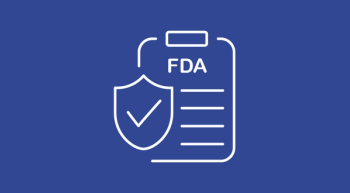
Regardless of HER2 Expression, Responses Are Showcased With Sacituzumab Govitecan in TNBC
Sacituzumab govitecan-hziy significantly improved progression-free survival in patients with HER2-low expressing TNBC and HER2-negative disease.
Patients with metastatic triple-negative breast cancer (TNBC) maintained clinical benefit with sacituzumab govitecan-hziy (Trodelvy), according to a post hoc analysis of the phase 3 ASCENT trial (NCT02574455). Furthermore, the efficacy results, which were presented at the European Society for Medical Oncology Breast Cancer Congress 2022, showed that the benefit was consistent across all groups, regardless of HER2 expression. 1
In the analysis, investigators stratified patients by HER2 expressions measured by immunohistochemistry (IHC) score. HER2-low expressors were defined those who had an IHC score of 1+ or 2+; those with IHC0 were defined as HER2-negative.
Among patients with HER2-low expressing TNBC, sacituzumab govitecan significantly improved progression-free survival (PFS) vs chemotherapy of physicians’ choice (TPC) of either capecitabine, eribulin, vinorelbine, or gemcitabine. The median PFS was 6.2 months with the antibody-drug conjugate (n = 63) vs 2.9 months with TPC (n = 60; HR, 0.44; 95% CI, 0.27-0.72; P = .002). For those with HER2-negative disease, the median PFS with sacituzumab govitecan (n = 149) was 4.3 months vs 1.6 months with TPC (n = 144; HR, 0.38; 95% CI, 0.28-0.50; P < .001).
Sacituzumab govitecan also improved overall survival (OS), reducing the risk of death in patients with HER2-low expressing TNBC by 57% compared with TPC. Specifically, among this patient population the median OS in the investigative arm was 14.0 months vs 8.7 months in the control arm (HR, 0.43; 95% CI, 0.28-0.67; P < .001). In the HER2 nonexpressors the median OS with sacituzumab govitecan was 11.3 months vs 5.9 months with TPC (HR, 0.51; 95% CI, 0.39-0.66; P < .001).
“Sacituzumab govitecan should be considered an effective treatment option for patients with metastatic TNBC eligible for second-line or later therapy, irrespective of HER2 status,” the study authors wrote.
These data were comparable to the reported findings for the intention-to-treat (ITT) population which resulted in the approval of sacituzumab govitecan for those with unresectable or locally advanced TNBC who have received at least 2 prior systemic therapies, 1 of which must have been for metastatic disease.2 In the overall population 267 patients received sacituzumab govitecan and 262 received TPC. The median PFS was 4.8 months (95% CI, 4.1-5.8) vs 1.7 months (95% CI, 1.5-2.5), respectively (HR, 0.43; 95% CI, 0.35-0.54; P < .0001). The median OS was 11.8 months (95% CI, 10.5-13.8) vs 6.9 months (95% CI, 5.9-7.6), respectively (HR, 0.51; 95% CI, 0.41-0.62; P < .0001).
Investigators of ASCENT randomly assigned patients with metastatic TNBC with relapsed or refractory disease following 2 or more prior lines of chemotherapy to either sacituzumab govitecan 10 mg/kg intravenously on days 1 and 8 of a 21-day cycle or TPC. Of note, patients with known HER2-positive disease were ineligible for enrollment and investigators determined the cutoff for HER2-negative status as HER2 IHC1+. Those who had HER2 IHC2+ must have had in situ hybridization negative status. Stratification factors included number of prior therapies, geographic region, and the presence of absence of known brain metastases.
The primary end point was PFS in the population of patients without brain metastases with secondary end points of PFS in the ITT population, OS, overall response rate (ORR), quality of life, duration of response (DOR), and time to response.
In terms of response, the ORR was comparable across populations for patients who received sacituzumab govitecan—HER2-low expression (32%), HER2-negative (31%), ITT (31%)—vs TPC— HER2-low expression (8%), HER2-negative (3%), ITT (4%).
The complete response (CR) rate for patients in the HER2-low expression population who received sacituzumab govitecan was 5% vs 2% among those who received TCP; the partial response (PR) rate was 27% vs 7%, respectively. More patients in the TPC arm had achieved stable disease (SD; 40%) compared with sacituzumab govitecan (37%). The median DOR was 5.6 months (95% CI, 4.3-not estimable [NE]) in the investigational arm vs 3.6 months (95% CI, 2.9-NE) in the control arm. The clinical benefit rate (CBR) was 68% and 45%, respectively.
In the HER2-negative population the CR rate was 2% vs 0% with sacituzumab govitecan and TPC, respectively. The PR rate was 29% and 3%, respectively, with 37% and 23% of patients achieving SD, respectively. The median DOR was 6.9 months (95% CI, 5.4-9.0) vs 2.9 (95% CI, 2.8-NE) in the investigational and control arms with CBRs of 68% vs 26%, respectively.
In the ITT population the CR rate was 4% vs 1%, the PR rate was 27% vs 3%, and SD was achieved in 36% vs 27% of patients who received sacituzumab govitecan and TPC, respectively. The median DOR was 6.3 months (95% CI, 5.5-9.0) with sacituzumab govitecan vs 3.6 months (95% CI, 2.8-NE). The CBR was 67% vs 31%, respectively.
References
- Hurvtiz A, Bardia A, Punie K, et al. Sacituzumab govitecan (SG) efficacy in patients with metastatic triple-negative breast cnacer (mTNBC) by HER2 immunohistochemistry (IHC) status: findings from the phase 3 ASCENT study. Presented at: European Society for Medical Oncology Breast Cancer Congress 2022. May 3-5, 2022; Berlin, Germany.
- FDA grants regular approval to sacituzumab govitecan for triple-negative breast cancer. FDA. Updated April 8, 2021. Accessed May 5, 2022. bit.ly/3vJMSVW
This article was originally published on OncLive as “Sacituzumab Govitecan Maintains Clinical Benefit Across HER2 Expressions in TNBC”
Newsletter
Knowledge is power. Don’t miss the most recent breakthroughs in cancer care.
















































































